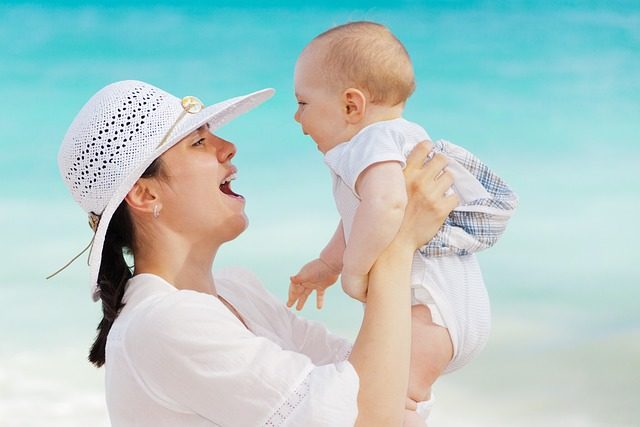Have you ever wondered why some people seem to have healthy, fulfilling relationships while others struggle to connect and maintain closeness with others? The answer may lie in attachment theory, a psychological framework that helps us understand how early relationships shape our attachment styles and impact our emotional well-being throughout life. In this comprehensive guide, we’ll explore the fascinating origins of attachment theory, delve into the four distinct attachment styles, and discuss the profound implications they have on our romantic relationships, parenting, and mental health.
Table of Contents
Key Takeaways
Attachment Theory, first formulated by John Bowlby and later developed through research, is the foundation for understanding attachment bonds.
Four primary types of infant-parent attachment have been identified: secure, anxious, avoidant and fearful-avoidant.
Attachment styles in adulthood can significantly impact romantic relationships, parenting practices and mental health outcomes. Various tools are available to assess one’s style & strategies exist to develop a secure attachment style.
Understanding Attachment Theory: Origins and Development

Attachment theory, a psychological, evolutionary, and ethological theory concerning attachment relationships between humans, was first formulated by psychiatrist and psychoanalyst John Bowlby. Bowlby’s groundbreaking work focused on the importance of early relationships in shaping attachment styles and their impact on later life.
Over the years, attachment theory has been the subject of extensive research, with many scholars building upon and expanding Bowlby’s original ideas.
John Bowlby and the Evolutionary Basis of Attachment
John Bowlby, a renowned British psychologist, psychiatrist, and psychoanalyst, was the driving force behind attachment theory. His evolutionary perspective on attachment emphasized the adaptive quality of attachment behaviors for survival and emotional regulation. Bowlby proposed that attachment, caregiving, and exploratory behavioral systems collectively shape human behavior, with the primary purpose of the attachment bond being to ensure the survival of the vulnerable infant.
This perspective has since been widely studied and supported by attachment theory and research, as well as attachment theory research.
Mary Ainsworth and the Strange Situation Experiment
Developmental psychologist Mary Ainsworth played a crucial role in expanding attachment theory by collaborating with Bowlby and conducting her own research. Ainsworth’s innovative Strange Situation experiment investigated infant-parent attachment by observing infants’ reactions to separation from and reunion with their primary caregivers. This experiment identified three main attachment patterns in infants: secure, anxious, and avoidant.
Later research expanded these patterns into four distinct attachment styles, adding the disorganized attachment style.
The Four Attachment Styles: Characteristics and Implications

As a result of the pioneering work by Bowlby and Ainsworth, we now recognize four different attachment styles that shape how we relate to others and navigate our emotional lives: secure, anxious, avoidant, and fearful-avoidant. Each attachment style has distinct characteristics and implications for relationships and mental health.
The following subsections delve into the unique features of each attachment style and their potential effects on a person’s emotional health and interpersonal relationships.
Secure Attachment
Secure attachment is often considered the ideal attachment style for healthy emotional development and relationships. Individuals with secure attachment:
Can trust and rely on others
Can express love and receive love
Are not afraid of intimacy
Are able to maintain a balance between independence and emotional closeness
Have relationships characterized by stability, trust, and emotional support.
Securely attached individuals also have higher self-esteem, better emotional intelligence, and a more positive outlook on life.
Anxious Attachment
Anxious attachment, on the other hand, is characterized by a constant fear of abandonment and a preoccupation with the status of one’s relationships. Individuals with anxious attachment styles often feel insecure about their partners’ feelings and intentions and may display clingy or overly dependent behavior. Their relationships can be marked by high levels of attachment anxiety and a persistent need for reassurance and validation, which can be emotionally draining for both partners.
Avoidant Attachment
Avoidant attachment is characterized by:
Discomfort with closeness and intimacy
Maintaining emotional distance from partners
Overly independent and self-reliant behavior
Difficulty expressing emotions or needs in relationships
This attachment style, influenced by one’s attachment system, can lead to a sense of emotional isolation and difficulty forming deep, lasting connections with others.
For more info, please visit Anxious Attachment: How to Know If You Have It and What …
Fearful-Avoidant Attachment
Fearful-avoidant attachment is a combination of anxious and avoidant attachment styles, leading to a pattern of emotional instability and relationship difficulties. Individuals with fearful-avoidant attachment may:
Feel both drawn to and repelled by intimacy
Struggle to trust others
Be particularly sensitive to rejection and abandonment
Push others away while simultaneously seeking closeness
This attachment style is often associated with the greatest psychological and relational challenges, which can be influenced by one’s attachment figure.
Attachment Formation in Childhood

Attachment styles form in childhood based on the responsiveness and consistency of attachment figures, such as primary caregivers, shaping future relationship patterns and emotional well-being throughout life. Caregiver responsiveness and consistency play a crucial role in the development of a child’s attachment style, with secure attachment being the most beneficial for overall well-being. Understanding attachment behavior can help us better comprehend the formation of these attachment styles.
The subsequent subsections will examine the role of early caregiver interactions in shaping attachment styles and their long-term consequences.
Caregiver Responsiveness and Consistency
The responsiveness and consistency of a caregiver are vital for the development of a child’s attachment style. When caregivers are attentive to a child’s needs, provide comfort, and consistently meet their emotional and physical needs, it fosters a sense of trust and security in the child. This secure attachment enables the child to:
Explore their environment
Hone social skills
Regulate emotions
Form healthy relationships later in life.
Conversely, when caregivers are unresponsive or inconsistent in their responses, it can result in insecure attachment styles, such as anxious or avoidant attachment.
The Impact of Early Experiences
Early experiences with caregivers have a lasting impact on an individual’s attachment style and relationships throughout life. Secure attachment styles developed in childhood can result in healthier relationships in adulthood, while insecure attachment styles can cause difficulties in forming and maintaining relationships.
Understanding the impact of early experiences on attachment styles and infant attachment patterns can provide valuable insights into our own relationship patterns and emotional well-being, as well as inform our approach to parenting and caregiving.
Attachment Styles in Adulthood: Relationships, Parenting, and Mental Health
As we navigate through adulthood, our attachment styles continue to influence various aspects of our lives, including romantic relationships, parenting, and mental health. Individuals with secure attachment styles tend to have healthier, more satisfying relationships, while those with insecure attachment styles may face challenges in forming and maintaining connections with others.
The upcoming subsections will discuss how attachment styles influence our adult lives and propose strategies for cultivating secure attachment in both ourselves and our offspring.
Romantic Relationships and Attachment Styles
Our attachment styles play a significant role in our romantic relationships, impacting the partners we choose and the dynamics that unfold within those relationships. For example, individuals with secure attachment styles are more likely to form stable, trusting relationships characterized by open communication and emotional support.
In contrast, individuals with insecure attachment styles (anxious, avoidant, or fearful-avoidant) may experience difficulties in their romantic relationships, such as excessive dependence, emotional distance, or instability. Recognizing and understanding the influence of our attachment styles on our romantic relationships can help us develop healthier, more fulfilling connections with our partners.
Parenting and the Intergenerational Transmission of Attachment
Our attachment styles not only affect our romantic relationships but also have a profound impact on our parenting practices and the attachment patterns of our children. Research has shown that secure attachment in parents is associated with more beneficial parenting practices and superior outcomes for children. Conversely, insecure attachment styles can result in parenting challenges and difficulties in fostering secure attachment in children.
Understanding the intergenerational transmission of attachment patterns can help us break the cycle of insecure attachment and promote healthy, secure attachment in our children.
Mental Health and Attachment Styles
Mental health is closely linked to attachment styles, with secure attachment being associated with more favorable mental health outcomes. Securely attached individuals tend to have higher self-esteem, better coping skills, and improved relationships with others. In contrast, insecure attachment styles (anxious, avoidant, or fearful-avoidant) are often associated with psychological difficulties, such as heightened levels of anxiety, depression, and difficulties in forming and maintaining relationships.
Recognizing the connection between attachment styles and mental health can help us better understand our own emotional well-being and inform our approach to self-care and personal growth.
Assessing Your Attachment Style: Tools and Resources
At this point, you might be interested in understanding your own attachment style and its implications for your relationships and emotional health. A variety of tools and resources, such as quizzes, questionnaires, and professional assessments, are available to help you determine your attachment style. Some well-known questionnaires and assessments for evaluating adult attachment styles include:
Relationship Questionnaire (RQ)
Experiences in Close Relationships-Revised questionnaire (ECR-RS)
Adult Attachment Scale (AAS)
Adult Attachment Inventory
Additionally, several online resources and applications can provide valuable insights into your attachment style, such as:
Adult Attachment Questionnaire (AAQ)
Adult Attachment Scale (AAS)
Attachment Style Questionnaire (ASQ)
Attachment style quiz on the Attachment Project website
Strategies for Developing a Secure Attachment Style
If you find that your attachment style is insecure (anxious, avoidant, or fearful-avoidant), you may be wondering if it’s possible to develop a more secure attachment style. The good news is that attachment styles can be changed with self-awareness, self-reflection, and intentional effort. Strategies for developing a secure attachment style include:
Gaining knowledge about your attachment style and assessing your beliefs about relationships
Counteracting anxious or avoidant tendencies through self-regulation and self-compassion
Enhancing emotional awareness and processing past experiences and associated emotions
Communicating openly and articulating your needs and feelings clearly
Being consistent, reliable, and adhering to your commitments in order to cultivate trust in relationships
In some cases, seeking therapy or professional support can be an invaluable resource for addressing attachment-related issues and fostering secure attachment.
Summary
In this comprehensive guide, we’ve explored the fascinating world of attachment theory and its profound implications for our relationships, parenting, and mental health. By understanding the origins of attachment theory and the four distinct attachment styles, we can gain valuable insights into our own emotional lives and the ways in which our early experiences shape our adult relationships. As we strive to develop secure attachment styles in ourselves and our children, we can foster healthier, more fulfilling connections with others and enhance our overall well-being. Remember, it’s never too late to cultivate secure attachment and transform the quality of your relationships and emotional life.
Frequently Asked Questions
What are the 4 principles of attachment theory?
Attachment Theory is characterized by four principles: a safe haven, secure base, proximity maintenance and separation distress, which are all evidenced in the relationship between a child and their caregiver.
What is attachment theory in relationships?
Attachment theory suggests that our early emotional bonds with caregivers shape our future relationships, influencing how we deal with relationship conflicts, perceive sex, and experience intimacy.
What is Bowlby’s theory of child attachment?
Bowlby’s attachment theory posits that infants are innately wired to form secure attachments with their primary caregivers, which serves as a survival strategy and shapes their emotional and social development.
Can attachment styles change over time?
Yes, attachment styles can change over time with self-awareness, self-reflection, and intentional effort.
How do attachment styles impact romantic relationships?
Attachment styles have a significant impact on romantic relationships, as they affect the dynamics of partner selection and the quality and stability of the connection.









